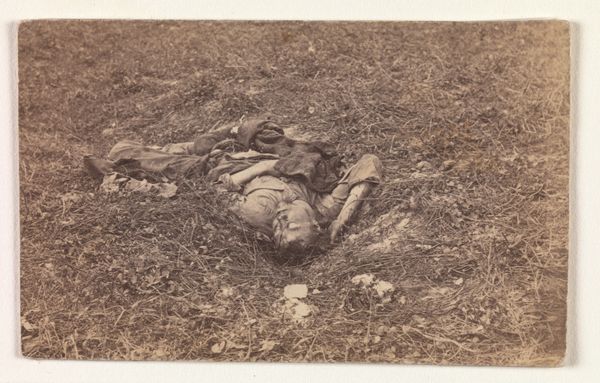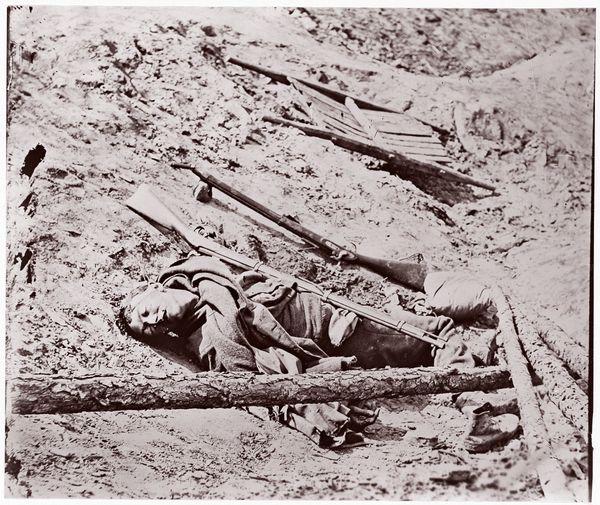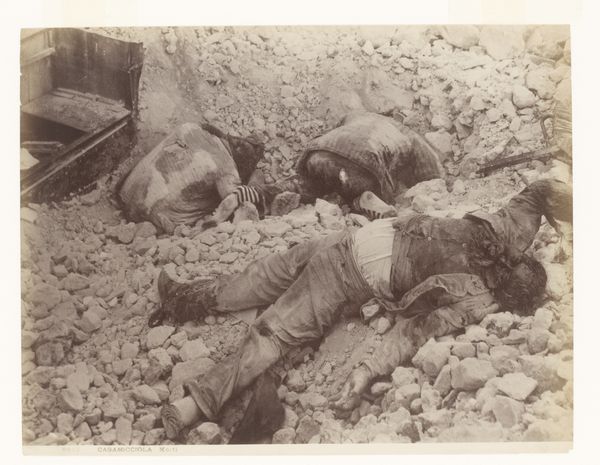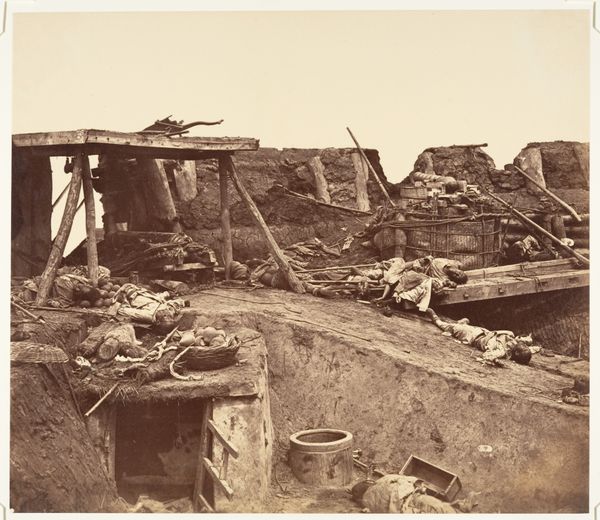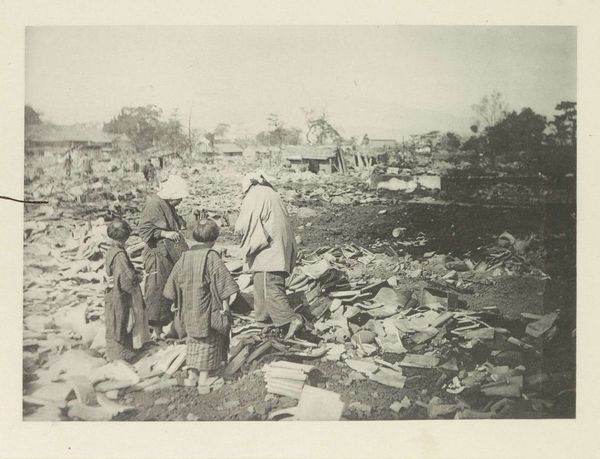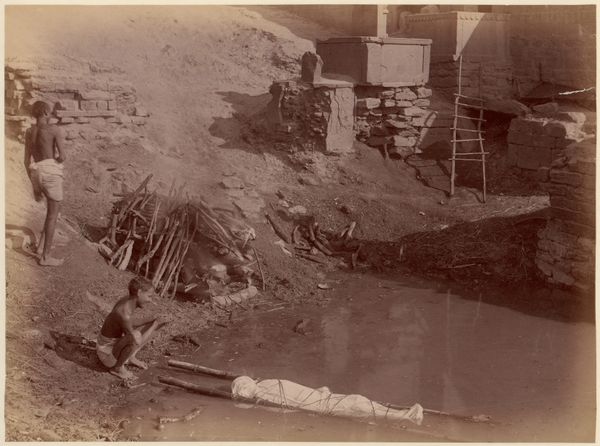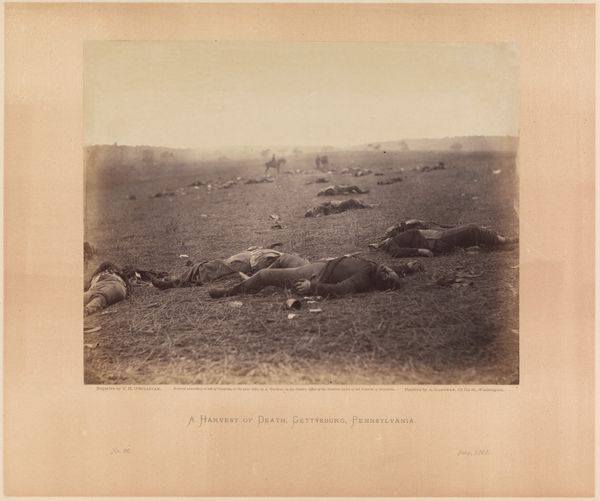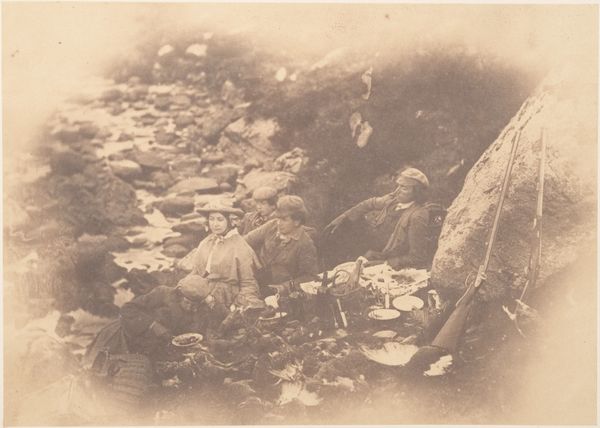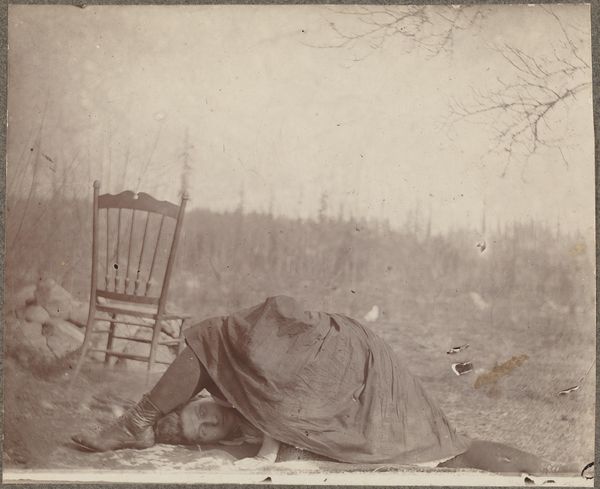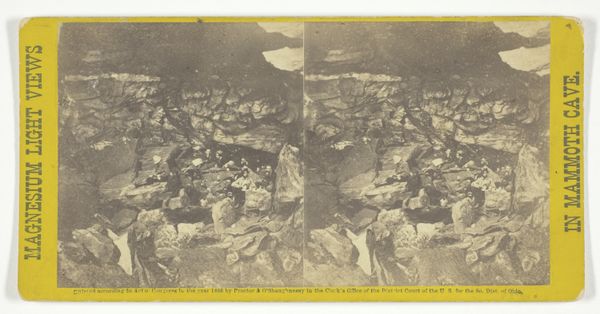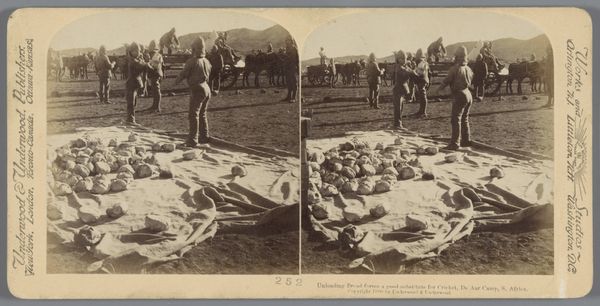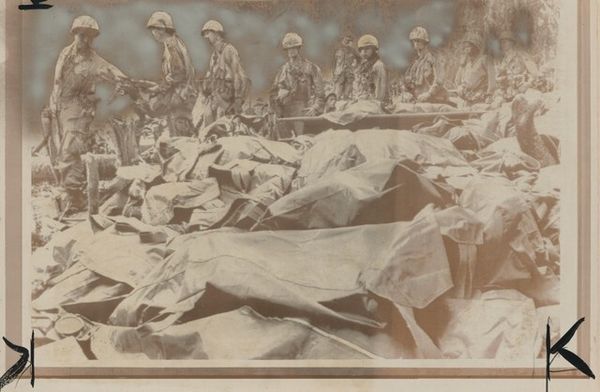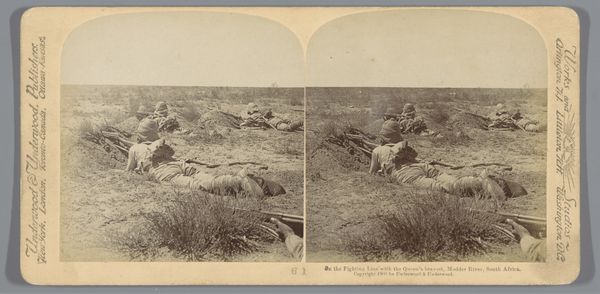
A Sharpshooter's Last Sleep, Gettysburg, Pennsylvania 1863
0:00
0:00
silver, print, photography, gelatin-silver-print
#
16_19th-century
#
silver
# print
#
war
#
landscape
#
photography
#
gelatin-silver-print
#
19th century
#
men
#
united-states
#
history-painting
#
realism
Dimensions: 17.7 × 22.9 cm (image/paper); 31.2 × 44.8 cm (album page)
Copyright: Public Domain
Editor: Here we have Alexander Gardner's "A Sharpshooter's Last Sleep, Gettysburg, Pennsylvania" from 1863. It’s a silver print photograph, and immediately I’m struck by the starkness of death amidst this rather still landscape. What is your interpretation of this piece? Curator: Gardner's photograph serves as a chilling document of the Civil War's brutal reality, moving beyond glorified depictions of battle to present its grim human cost. Given the era’s conventions, and nascent photography's power, do you think this image functions as a neutral record or does it make an argument? Editor: That's an interesting point. It definitely feels like it's making an argument. The composition, the way the body is so centrally placed, it feels intentional, almost staged, even. Curator: Indeed. This photograph, while seemingly objective, participates in shaping public memory of the war. Gardner’s placement of the rifle near the body, the choice of the “sharpshooter” title, and even the possibility of the body being moved, these contribute to a particular narrative. One of loss, and perhaps also futility. What do you think that narrative achieves in the context of the divided nation at that time? Editor: It probably served to further divide. Some might see it as honoring a fallen soldier, while others might see it as a condemnation of the war itself. Curator: Precisely. Gardner's image became part of a larger cultural and political discourse about the war, its causes, and its consequences. By framing death so directly, it challenges viewers to confront the uncomfortable truths about conflict and sacrifice. Editor: I hadn’t considered how constructed this supposedly objective record really is. I’m seeing this work in a completely different light now. Curator: And I, in turn, am reminded of how powerfully images shape our collective understanding of historical events.
Comments
No comments
Be the first to comment and join the conversation on the ultimate creative platform.
